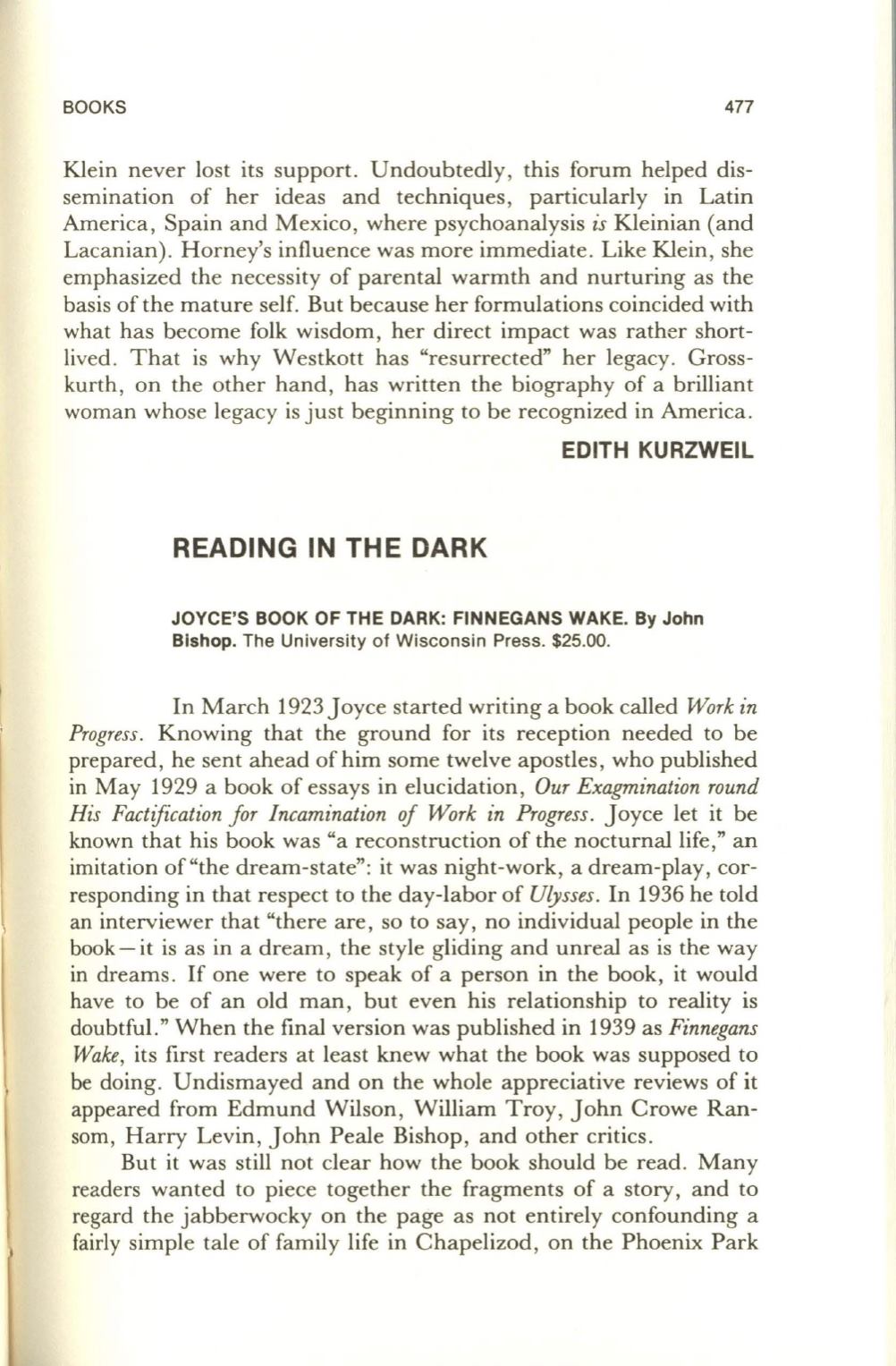
BOOKS
477
Klein never lost its support. Undoubtedly, this forum helped dis–
semination of her ideas and techniques, particularly in Latin
America, Spain and Mexico, where psychoanalysis
is
Kleinian (and
Lacanian). Horney's influence was more immediate . Like Klein , she
emphasized the necessity of parental warmth and nurturing as the
basis of the mature self. But because her formulations coincided with
what has become folk wisdom, her direct impact was rather short–
lived . That is why Westkott has "resurrected" her legacy. Gross–
kurth, on the other hand, has written the biography of a brilliant
woman whose legacy is just beginning to be recognized in America .
EDITH KURZWEIL
READING IN THE DARK
JOYCE'S BOOK OF THE DARK: FINNEGANS WAKE. By John
Bishop.
The University of Wisconsin Press. $25.00.
In March 1923 Joyce started writing a book called
Work in
Progress.
Knowing that the ground for its reception needed to be
prepared, he sent ahead of him some twelve apostles, who published
in May 1929 a book of essays in elucidation,
Our Exagmination round
His Factification for Incamination of Work in Progress.
Joyce let it be
known that his book was "a reconstruction of the nocturnal life," an
imitation of "the dream-state": it was night-work, a dream-play, cor–
responding in that respect to the day-labor of
Ulysses.
In 1936 he told
an interviewer that "there are, so to say, no individual people in the
book - it is as in a dream, the style gliding and unreal as is the way
in dreams . If one were to speak of a person in the book, it would
have to be of an old man, but even his relationship to reality is
doubtful." When the final version was published in 1939 as
Finnegans
Wake,
its first readers at least knew what the book was supposed to
be doing. Undismayed and on the whole appreciative reviews of it
appeared from Edmund Wilson , William Troy, John Crowe Ran–
som, Harry Levin, John Peale Bishop, and other critics.
But it was still not clear how the book should be read. Many
readers wanted to piece together the fragments of a story, and to
regard the jabberwocky on the page as not entirely confounding a
fairly simple tale of family life in Chapelizod, on the Phoenix Park


